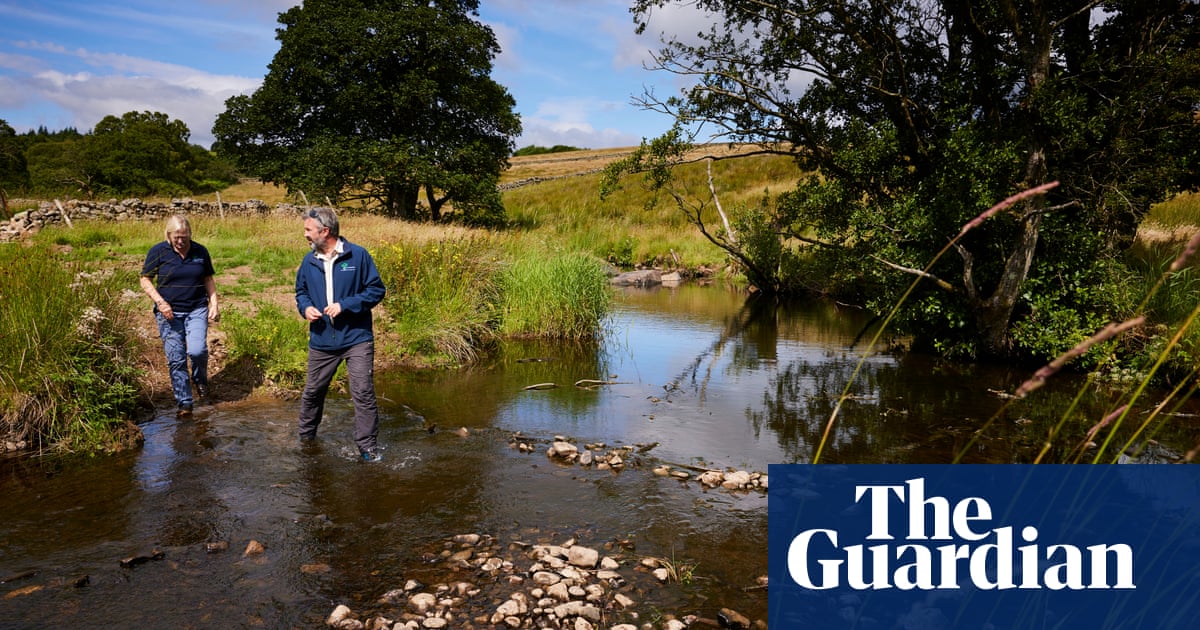
As the boat weaves between the jagged rocks of the Scilly archipelago off the coast of Cornwall, Round Island, uninhabited but for a lonely Victorian lighthouse, comes into view. Those on board preparing for their visit are not armed with cameras and binoculars but with buckets of toxic cereal bait and rat traps.
When signs that rats were running riot over the island were first spotted in January 2022, a rescue operation to save resident seabirds kicked into action. There was just a small window of opportunity to attempt a “total eradication” of the rats before Manx shearwaters and storm petrels returned in April.
“It was a horrible feeling because you just know burrow-nesting seabirds aren’t going to survive with those rats,” says Jaclyn Pearson, islands and biosecurity officer for the RSPB, who found the first signs of the invasion. Manx shearwaters and storm petrels “use the same habitat – a rat will go down that hole where the bird lays its eggs. If the rats are not removed entirely by the time the birds have laid their eggs, all the chicks would be eaten.”
Pearson is one of six members of Biosecurity for Life, a crack squad of conservationists stationed across the UK with a mission to save seabirds from incursions of invasive species on our island habitats. “We hold the world population of Manxies along the west coast islands of the UK,” she says. “They have a very specific habitat. Those islands have the right kind of vegetation – the birds can dig burrows close to the sea, they can go out and fish, and are away from predators. In the south-west we have the only two colonies in England, on Scilly and Lundy. Round Island is a very precious island.”
Advertisement
Armed with a playbook drawn up by Elizabeth (Biz) Bell, a senior ecologist with New Zealand-based Wildlife Management International and a specialist in the removal of invasive species from islands, Pearson set about mobilising local volunteers. “I was just bowled over by the number that came forward,” she says.
On the Guardian’s trip to the island in March, Stu Barrs, a local paramedic, is among those ready to comb the terrain for signs of any remaining rats. “It’s an area of outstanding beauty. If you don’t protect all the stuff that’s here from the invasive stuff then it will lose a bit of its sparkle,” he says.
Following the perilous ascent from the landing dinghy and up the rusting ladder that clings to the island’s rocky edge, it does not take long to discover signs of the rats’ continuing presence: at the top of the rise, there are gnaw marks carved into a flavoured wax block used to monitor rodent activity.
Undeterred, the volunteers set to work scouring the island, refreshing bait and luring rats into traps with smears of peanut butter. Efforts are made to target only the rats and not to harm any other species. “We’re very careful about mitigating against non-target species. We do all we can to keep those risks minimal,” Pearson says.
With its steep cliffs rising from the sea and shimmering in the sun, it is easy to see why shearwater travel from as far as the Patagonian shelf to get to Round Island, which measures 400 metres (1,300 feet) from end to end. However, the viability of such a habitat relies on species breeding without fear of invasive predators. Brown rats are not native to the UK; they are thought to have arrived in the 1700s and to have spread across the world from northern Asia along shipping routes. Rats’ rapid breeding and omnivorous diet can pose catastrophic problems for wildlife that have not evolved alongside them.
Between January and April, Pearson and more than 35 volunteers working in conjunction with Isles of Scilly Wildlife Trust were able to land on Round Island 13 times. But with weeks of rough weather repeatedly preventing landings, anxiety among the team grew as the deadline neared. “When you do this work, you’ve got to remove every rat,” Pearson explains. “You can’t leave one because within six weeks they’ve bred again. You can be back to your original number within a couple of months.”
With just days to go before the birds were expected back, the team finally stopped finding any further signs of rats. On the penultimate visit, a camera trap that had repeatedly indicated the presence of what was thought to be the island’s last “fussy” rat showed one of the first returning shearwaters using the burrow as a home. “We did it!” Pearson says. “We scoured that island – we would know if there were still rats there.”
The team were overjoyed; the returning seabirds will now have a chance of breeding young that can grow to adulthood. “The fact that it happened just in time for the breeding pairs of birds on the island to get a chance … It’s quite amazing,” Barrs says.
Previous rat removals on Scilly have shown there is reason to be optimistic for Round Island’s future.
According to Dr Vickie Heaney, a seabird ecologist for Isles of Scilly Wildlife Trust, a similar mission on St Agnes and Gugh in 2013 led to a rise in the number of Manx shearwaters from 20 breeding pairs to just over 80, with 53 chicks fledging last year alone. Petrels are up 30 or 40 pairs.
Advertisement
“It’s absolutely crystal clear that getting rid of the rats has made a massive difference to the seabirds – they didn’t breed at all on St Agnes and Gugh,” Heaney says.
Another successful mission on Lundy in 2004 resulted in a near 2,000% increase in Manx shearwaters, and the seabird population has tripled. “We want to follow the species recovery course that has happened on Lundy,” Pearson says.
Although removing rats from islands is not a magic bullet for reversing the fortunes of Britain’s beleaguered seabirds, it is an achievable step with tangible results. Bell says: “Many things impact seabirds, but predation is one we can deal with. We have the technology to eradicate pest species like rodents so it’s an easy first step compared to dealing with political will about climate change, massive pollution events and fisheries.
“I’d love to see some political change on those other factors as well, but those will take more significant time,” Bell adds. “An eradication can be done within months.”
Meanwhile, Pearson is watching for signs of revival on Round Island and there has been good news about the Scilly shrew.
“We know from data that the Scilly shrews have been there for a long time. This is an endemic species which lives on Scilly and at the start of this work we weren’t finding any shrew teeth marks on any of the tools,” says Pearson.
“But on the last couple of trips out we have started to find teeth marks on the non-toxic chocolate wax and I believe the same thing is happening as happened on St Agnes in 2013. When we removed the rats, the number of shrews started to increase very quickly.”












